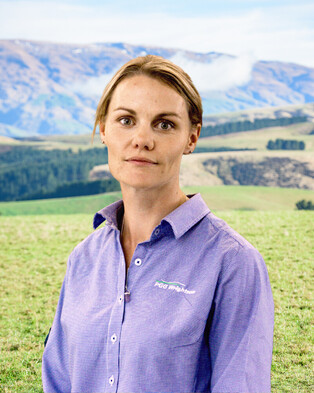Dairy farmers are being encouraged to maintain the body condition of their rising three-year-olds as first-time calvers to help secure their longevity in the herd and maximise profitability.
GrainCorp Feeds hosted PGG Wrightson Technical Expert in Ruminant Nutrition Laura Pattie this month on a farmer webinar. She says prioritising rising three-year-olds for a second season is crucial to minimising wastage in terms of empty cows and lost milk production. This begins at calving time and throughout the season.
“One of the biggest areas of wastage in our dairy industry is our rising three-year-olds, our first calvers, that are not getting pregnant again after their first season. If we can set them up better by prioritizing their nutrition now and maintaining their body condition, we aim tohave less wastage on farm,” says Laura.
“Good heifer management is all about increasing profitability. We want to maximise their production, not only just in their first lactation, but throughout their entire lifetime of production.”
While good heifer management is important, Laura says farmers should be checking the body condition scores of all their animals ahead of calving to ensure they have enough reserves for the coming calving season.
“Do your calculations to work out the best scenarios for your herd. What’s it going to look like to keep production at a certain level now? How much condition can you add and how many kilos of feed do you need to do that?” says Laura.
She references DairyNZ’s Facts and Figures book, which can help calculate how much feed is required to maintain production in a herd through to the end of the season and add condition if needed.
Laura says with the forecast payout looking good, dairy farmers might consider investing in more feed.
“Marginal profit gains of even 70 cents extra per cow per day can make a big difference. If you have 74 days of milking left to go and 200 or 300 cows, you're looking at another $10,000 and up to $15,000 in income.”
Industry standard body condition score for mixed-aged cows is 5.0, and for first or second calvers 5.5 for calving time
“When animals reach their BCS targets there is less risk of uterine infections, fewer metabolic issues, improved production, and better reproduction results. If cows are in good health and recover well from calving, this also shortens the period between calving and the following season’s mating.
“As a rule of thumb, we want no more than 15 percent of the herd above or below these targets. Then we've got a nice uniform herd, which is important to the efficiency of the overall farm system.
“If herds are too far above these scores, they tend to reduce their dry matter intake post-calving which affects milk production and increases the risk of ketosis. The same applies for cows well below those scores, who won’t have enough reserves to maintain milk production.”
Laura stresses the importance of looking at cow condition and not just weight.
“Condition really is about that layer of squishiness on her, which means we can then get an idea of what sort of reserves she has to support her performance and her health.”
DairyNZ runs the Body Condition Scoring Certified Assessor Programme and Laura recommends farmers consider getting an independent person to assess their herds.
“When we see our cows every day, it can be hard to be honest with ourselves about where they're actually at. Contracting the services of a certified assessor will give you an objective and reliable measure of your herd’s body condition to help you make better decisions.
“It’s all about maximising dry-matter intake and working out how many kilograms of dry-matter each animal needs to be performing at the level we want, while not losing condition,” says Laura.
She also encourages farmers to monitor NDF (neutral detergent fibre) levels and pasture utilization. This is particularly important in late Summer when pasture has suffered heat stress and NDF levels are not as good, or in Winter when pasture utilisation might be lower. This is because high NDF levels can limit dry matter intakes and herd performance.
Access to plenty of clean water and salt is also crucial along with adding magnesium and calcium which will have been mined from herds during pregnancy.
“We’re not just feeding to keep the milk pumping,” says Laura. “We want to manage our cows’ condition as well to ensure they stay in our herd as productive animals for many seasons to come.”
